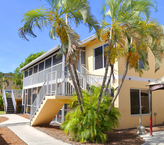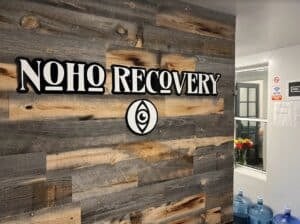Stimulant Withdrawal And Detox
What Is Stimulant Withdrawal?
Stimulants affect the body’s central nervous system and increase neurotransmitter activity inside the brain. After heavy or prolonged use, the user’s brain becomes reliant on the drugs to regulate cognitive function and focus.
Over time, even someone who only used stimulants to help them study or before athletic games may develop a physical dependence on the drugs. If a person addicted to stimulants quits using them, they will experience withdrawal symptoms as their brain has to relearn how to function on its own.
Withdrawal symptoms can be both physical and psychological in nature and are usually moderate to severe. The psychological withdrawal from stimulants can be especially severe, leading some former users to relapse; others may even become suicidal or violent. For this reason, stimulant users are advised to seek professional medical help when quitting the drugs.
Online Addiction Counseling
Get professional help from an online addiction and mental health counselor from BetterHelp.
- Access to Therapy 24/7
- Easy Online Scheduling
- 20,000+ Licensed Therapists
Paid Advertising. We may receive advertising fees if you follow links to the BetterHelp site.
Symptoms Of Withdrawal
Each person quitting stimulants will have slightly different symptoms. They vary based on a number of factors, like the person’s tolerance and metabolism, as well as their history of use.
Withdrawal from stimulants is characterized by a dysphoric mood—feeling unhappy—and the presence of two or more of the following symptoms:
- Jittery reactions
- Anxiety
- Chills
- Dehydration
- Dulled senses
- Slowed speech
- Loss of interest
- Slowed movements
- Slow heart rate
- Irritability
- Hallucinations
- Paranoia
- Fatigue
- Depression
- Increased appetite
- Impaired memory
- Weight loss or gaunt appearance
- Insomnia or hypersomnia
- Body aches
- Drug cravings
Stimulant withdrawal-related depression can be very severe, especially for those with a history of clinical depression.
Those with co-occurring mental disorders and/or addictions to other substances may experience more severe symptoms, as well as a longer withdrawal process.

Break free from addiction.
You have options. Talk about them with a treatment provider today.
Duration Of Withdrawal
Generally, symptoms present within a few hours to several days after the last use of the drug. Most intense symptoms peak about a week in. Some psychological symptoms, like depression, can last for weeks or even months after quitting. Symptoms that persist after two weeks are considered post-acute withdrawal symptoms (PAWS). PAWS may include poor sleep, anxiety, depression, irritability/agitation, poor concentration, fatigue, and mood-swings. PAWS can last from 12-18 months depending on the individual; however, symptoms tend to decrease in severity as times goes by.
Looking for a place to start?
Join the thousands of people that have called a treatment provider for rehab information.
Free and confidential
Available 24/7
Access to professional treatment
Stimulant Withdrawal Timeline
| Days 1-3 | During the first 24 to 72 hours after the last use, former users begin to experience withdrawal symptoms, including fatigue, body aches, anxiety and a general feeling of unhappiness. They’ll also start to crave the drug and may have trouble sleeping. Heavy users may also experience hallucinations, paranoia, and panic. |
|---|---|
| Days 4-10 | Symptoms of stimulant withdrawal usually last about seven days. Towards the end of the week, most symptoms begin to subside, but drug cravings can become more intense. Extreme fatigue and severe depression may present. |
| Days 11-17 | While most symptoms have begun to lessen, depression and insomnia may continue. For some, insomnia can lead to hypersomnia or excessive sleeping. Some users may also experience mood swings. |
| Days 18+ | The worst is usually over at this point. Any remaining symptoms are considered PAWS and should be mild and will continue to fade. For some, depression and cravings may continue. These symptoms can last for several weeks to months before they subside. |
Check if my insurance covers rehab
Addiction Center is not affiliated with any insurance.
Stimulant Detox
Detox from stimulants is safest and most successful under the supervision of medical professionals. Medical detox programs help to manage symptoms of withdrawal, making the whole process more bearable and efficient.
Depending on the stimulant, a patient may be advised to quit the drug “cold turkey” or by gradually reducing use, called tapering.
In general, a taper method will produce less severe withdrawal symptoms. Sometimes, addiction treatment medications, like clonidine, may be used in place of stimulants when tapering off use.
Featured Centers Offering Detox from Stimulants


During detox, physicians may also treat some symptoms of stimulant withdrawal with medications. For instance, antidepressants may be prescribed to help with depression and agitation and Trazodone may be used to treat insomnia. Doctors will take a patient’s symptoms, medical history and other personalized factors into consideration when developing a plan of action for their recovery.
Medical detox is available in many inpatient and outpatient rehabs.
It didn’t stop cold turkey. I was in therapy and getting help, but it wasn’t an easy process and I slipped up a number of times. Not to sound like a wimp, but getting off of any drug, even [stimulants like] Adderall, makes you feel like you have mono, the stomach flu, and strep throat all at once. Finally the whole thing just felt so pathetic that I flushed the remaining pills down the toilet.
Treatment For Stimulant Addiction
A drug treatment center will give those suffering from stimulant addiction their best chance at a successful recovery. Once detox is complete, former users will work with therapists to overcome the underlying thoughts and behaviors that led to their addiction. Treatment centers also teach relapse prevention tactics and connect patients with support groups, both of which are invaluable in recovery.
Outpatient treatment programs are also available to help stimulant users break free of their addiction. Contact a treatment provider for help finding a stimulant addiction treatment program.
Published:
Author
Jeffrey Juergens

-
Jeffrey Juergens earned his Bachelor’s and Juris Doctor from the University of Florida. Jeffrey’s desire to help others led him to focus on economic and social development and policy making. After graduation, he decided to pursue his passion of writing and editing. Jeffrey’s mission is to educate and inform the public on addiction issues and help those in need of treatment find the best option for them.
- More from Jeffrey Juergens
Reviewed by Certified Addiction Professional:
Theresa Parisi

Theresa Parisi is a Certified Addiction Professional (CAP), Certified Behavioral Health Case Manager (CBHCM), and International Certified Alcohol and Drug Counselor (ICADC) with over 12 years of experience in the addiction treatment field.
- More from Theresa Parisi
Sources


Recovery Starts Today
Call Now For Addiction Support



Newport Academy – Teen Rehab Center
Port Townsend , WA


Sequoia Detox Centers
Spokane Valley , WA



Moonlight Mountain Recovery – Nampa
Nampa , ID

Bayside Marin Treatment Center
San Rafael , CA

Newport Institute for Young Adults
Sunol , CA

The Camp Recovery Center
Scotts Valley , CA

Moonlight Mountain Recovery
Pocatello , ID


Tarzana Recovery Center – TRC
Tarzana , CA

